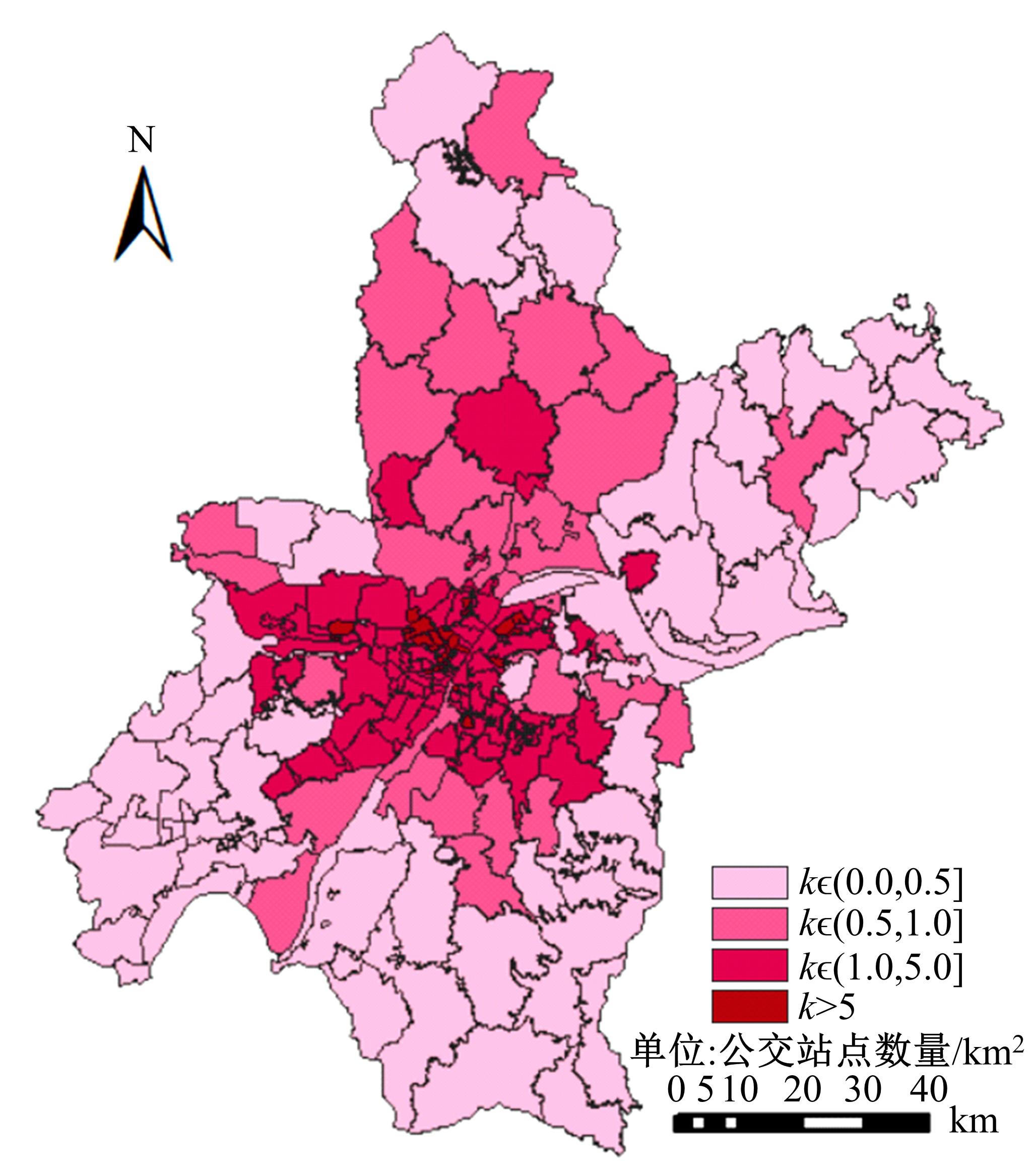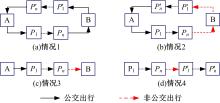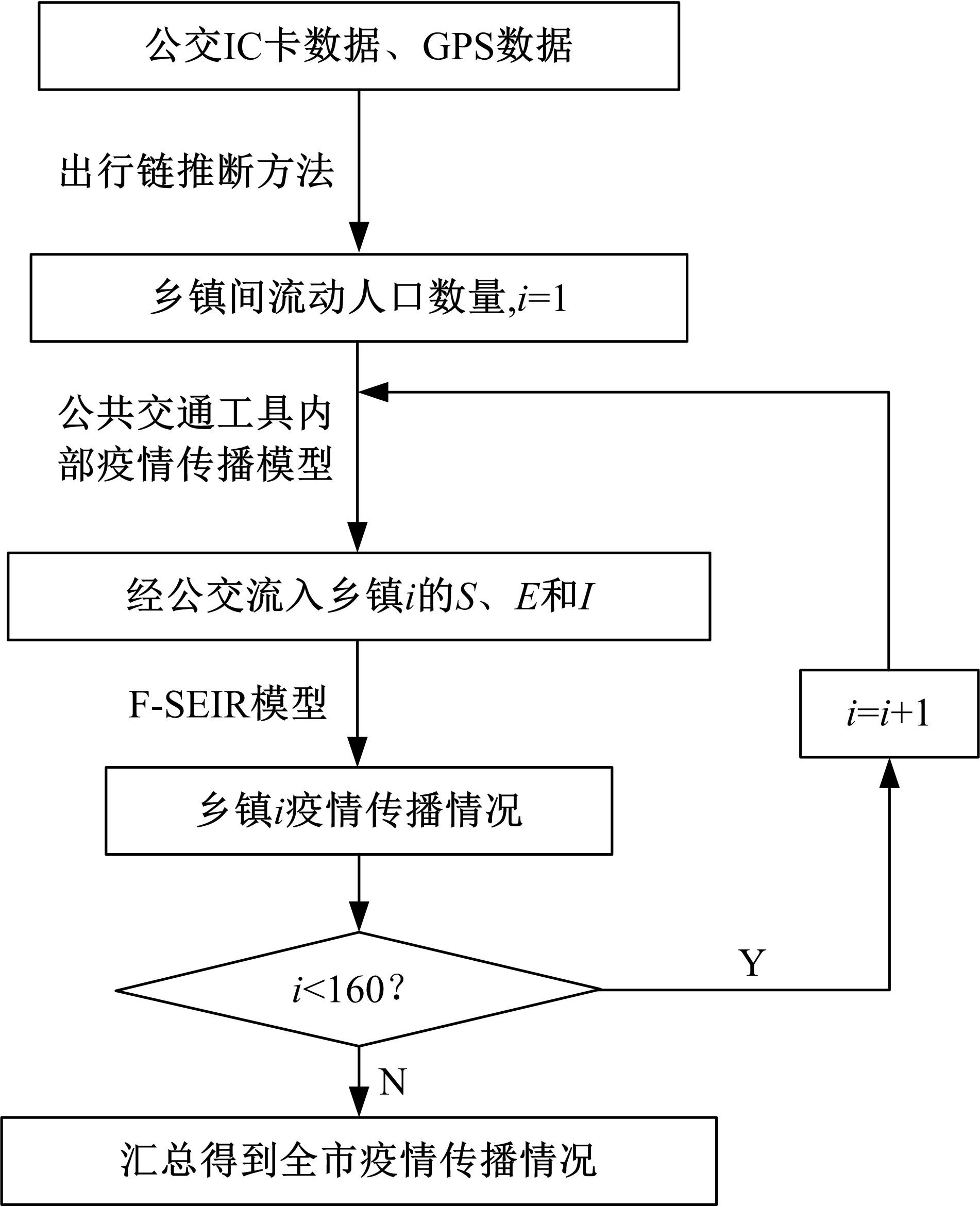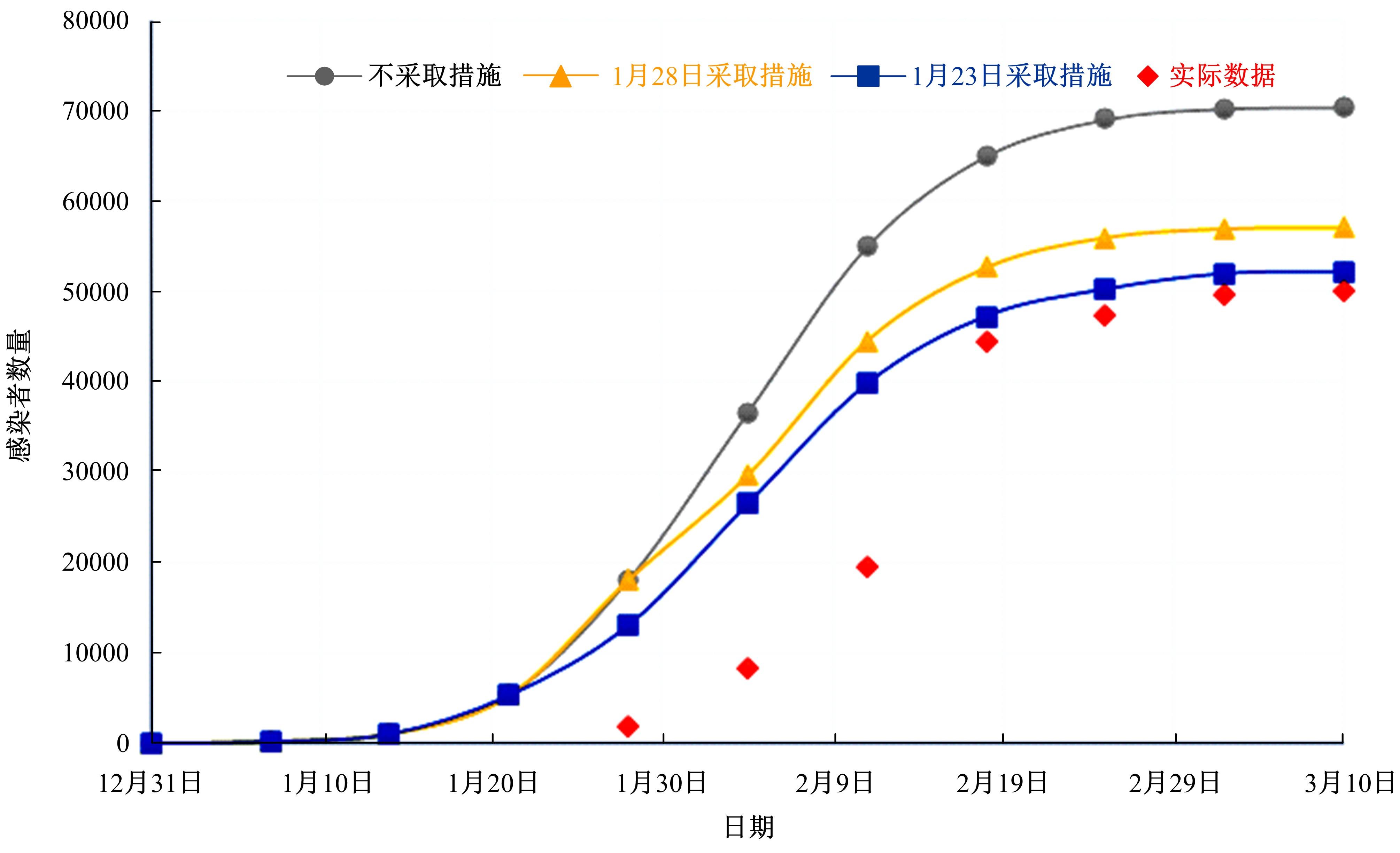Journal of Jilin University(Engineering and Technology Edition) ›› 2023, Vol. 53 ›› Issue (1): 141-149.doi: 10.13229/j.cnki.jdxbgxb20210587
Modeling urban bus transit spreading the epidemic under public health emergencies
Shao-jie WU1,2,3( ),Jian SUN1,2,3(
),Jian SUN1,2,3( )
)
- 1.College of Transportation Engineering,Chang'an University,Xi'an 710021,China
2.College of Future Transportation,Chang'an University,Xi'an 710021,China
3.Smart City and Intelligent Transportation Interdisciplinary Center,Chang'an University,Xi'an 710021,China
CLC Number:
- U121
| 1 | 中国疾病预防控制中心新型冠状病毒肺炎应急响应机制流行病学组. 新型冠状病毒肺炎流行病学特征分析[J]. 中华流行病学杂志, 2020, 41(2): 145-151. |
| Epidemiology Working Group for NCIP Epidemic Response, Chinese Center for Disease Control and Prevention. The epidemiological characteristics of an outbreak of 2019 novel coronavirus diseases (COVID-19) in China[J]. Chinese Journal of Epidemiology, 2020,41(2): 145-151. | |
| 2 | Huang C, Wang Y, Li X, et al. Clinical features of patients infected with 2019 novel coronavirus in Wuhan, China[J]. The Lancet, 2020, 395(10223): 497-506. |
| 3 | Nian G Y, Peng B Z, Sun D J, et al. Impact of COVID-19 on urban mobility during post-epidemic period in megacities: from the perspectives of taxi travel and social vitality[J]. Sustainability, 2020, 12(19):No.12197954. |
| 4 | 张殿业, 郭寒英. 交通运输通道防控非典型肺炎(SARS)疫情的作用研究[J]. 交通运输工程与信息学报, 2003, 1(1): 31-36. |
| Zhang Dian-ye, Guo Han-ying. Effect of traffic and transportation prevention and controlling sever acute respiratory syndrome epidemic situation[J]. Journal of Transportation Engineering and Information, 2003, 1(1): 31-36. | |
| 5 | 郭寒英, 张殿业, 石红国. 交通运输突发疫情扩散理论与模型研究[J]. 铁道运输与经济, 2004, 26(2):65-67. |
| Guo Han-ying, Zhang Dian-ye, Shi Hong-guo. Spreading theory and model study of broke-out diseases in traffic and transportation[J]. Railway Transport and Economy, 2004, 26(2): 65-67. | |
| 6 | 杨华, 李小文, 施宏,等. SARS沿交通线的"飞点"传播模型[J]. 遥感学报, 2003, 7(4): 251-255. |
| Yang Hua, Li Xiao-wen, Shi Hong, et al. "Fly dots" spreading model of SARS along transportation[J]. Journal of Remote Sensing, 2003, 7(4): 251-255. | |
| 7 | 刘亚岚, 阎守邕, 李小文,等. 中国内地人口流动空间规律研究及其在SARS控制宏观决策中的应用[J]. 遥感学报, 2003, 7(4): 273-276. |
| Liu Yan-lan, Yan Shou-yong, Li Xiao-wen, et al. Study on population migration characteristics in mainland China and its applications to decision-making for SARS control[J]. Journal of Remote Sensing, 2003, 7(4): 273-276. | |
| 8 | 张云. 中国大陆地区甲型H1N1流感疫情传播的建模与分析[D]. 北京:北京师范大学地理科学学部, 2011. |
| Zhang Yun. Modeling and analysis of influenza a (H1N1) epidemiology in mainland of China[D]. Beijing: Beijing Normal University, Faculty of Geographical Science, 2011. | |
| 9 | Fang L Q, Vlas S J D, Feng D, et al. Geographical spread of SARS in mainland China[J]. Tropical Medicine & International Health, 2009, 14(Sup.1): 14⁃20. |
| 10 | Khan K, Arino J, Hu W, et al. Spread of a novel influenza A (H1N1) virus via global airline transportation[J]. N Engl J Med, 2009, 361(2): 212-214. |
| 11 | Anderson R M, Heesterbeek H, Klinkenberg D D, et al. How will country-based mitigation measures influence the course of the COVID-19 epidemic[J]. The Lancet, 2020, 395(10228): 931-934. |
| 12 | Roosa K, Lee Y, Luo R, et al. Real-time forecasts of the 2019-nCoV epidemic in China from February 5th to February 24th, 2020[J]. Infectious Disease Modelling, 2020, 5:256-263. |
| 13 | Tang B, Wang X, Li Q, et al. Estimation of the transmission risk of the 2019-nCoV and its implication for public health interventions[J]. Journal of Clinical Medicine,2020,9(2): No.9020462. |
| 14 | 程晓敏, 李芊璘, 陆家海. 从2019新型冠状病毒病疫情谈新发传染病防控策略[J]. 传染病信息, 2020, 33(1): 22-26. |
| Cheng Xiao-min, Li Qian-lin, Lu Jia-hai. Prevention and control strategies for emerging infectious diseases based on the outbreak of coronavirus disease 2019[J]. Infectious Disease Information, 2020, 33(1): 22-26. | |
| 15 | Kucharski A J, Russell T W, Diamond C, et al. Early dynamics of transmission and control of COVID-19: a mathematical modelling study[J]. The Lancet Infectious Diseases, 2020, 20(5): 553-558. |
| 16 | You C, Deng Y H, Hu W J, et al. Estimation of the time-varying reproduction number of COVID-19 outbreak in China[J]. International Journal of Hygiene and Environmental Health, 2020, 228: No.113555. |
| 17 | Yang Z, Zeng Z, Wang K,et al. Modified SEIR and AI prediction of the epidemics trend of COVID-19 in China under public health interventions[J]. Journal of Thoracic Disease,2020,12(3): 165-174. |
| 18 | 中华人民共和国国家卫生健康委员会. 新型冠状病毒肺炎诊疗方案(试行第六版)[J]. 中国感染控制杂志, 2020, 19(2): 192-195. |
| National Health Commission of the People's Republic of China.Diagnosis and treatment plan for novel coronavirus pneumonia(trial version 6)[J]. Chinese Journal of Infection Control, 2020, 19(2): 192-195. | |
| 19 | 靳英辉,蔡林,程真顺,等.新型冠状病毒(2019-nCoV)感染的肺炎诊疗快速建议指南(标准版)[J]. 解放军医学杂志, 2020, 45(1): 1-20. |
| Jin Ying-hui, Cai Lin, Cheng Zhen-shun, et al. A rapid advice guideline for the diagnosis and treatment of 2019 novel coronavirus (2019-nCoV) infected pneumonia (standard version)[J]. Medical Journal of Chinese People's Liberation Army, 2020, 45(1): 1-20. | |
| 20 | Li Q, Guan X, Wu P, et al. Early transmission dynamics in Wuhan, China, of novel coronavirus-infected pneumonia[J]. The New England Journal of Medicine, 2020, 382(13): 1199-1207. |
| 21 | Zhang J, Lou J, Ma Z, et al. A compartmental model for the analysis of SARS transmission patterns and outbreak control measures in China[J]. Applied Mathematics & Computation, 2005, 162(2): 909-924. |
| 22 | Lin K, Fong D, Zhu B, et al. Environmental factors on the SARS epidemic: air temperature, passage of time and multiplicative effect of hospital infection [J]. Epidemiology and Infection, 2006, 134(2): 223-230. |
| 23 | 陈文江,吴开琛,吴开录,等.运用数学模型探讨SARS聚集性传播的机制[J].中国热带医学, 2004, 4(1): 20-23. |
| Chen Wen-jiang, Wu Kai-chen, Wu Kai-lu, et al. Approach to the mechanism of cluster transmission of SARS by mathematical model [J]. China Tropical Medicine, 2004, 4(1): 20-23. | |
| 24 | 张宇, 田万利, 吴忠广,等. 基于改进SEIR模型的新冠肺炎疫情沿交通线路传播机制[J]. 交通运输工程学报, 2020, 20(3): 150-158. |
| Zhang Yu, Tian Wan-li, Wu Zhong-guang, et al. Study on transmission mechanism of COVID-19 epidemic along traffic lines based on improved SEIR model[J]. Journal of Traffic and Transportation Engineering, 2020, 20(3): 150-158. | |
| 25 | 国家统计局. 第六次全国普查汇总数据[R]. 北京:中国统计出版社,2010. |
| 26 | 李佳怡, 张锦, 张静文,等. 城市公交乘客下车站点推算方法和有效性评价[J]. 武汉大学学报:信息科学版, 2018, 43(8): 1172-1177. |
| Li Jia-yi, Zhang Jin, Zhang Jing-wen, et al. An algorithm to identify passengers' alighting stations and the effectiveness evaluation[J]. Geomatics and Information Science of Wuhan University, 2018, 43(8): 1172-1177. |
| [1] | Bao-feng SUN,Yuan JIANG,Li-li ZHENG,Wan-kun CUI,Xin-xin REN. Modified design model of maintenance network for urban rail transit system with variable radius covering [J]. Journal of Jilin University(Engineering and Technology Edition), 2020, 50(2): 526-534. |
|
||

















